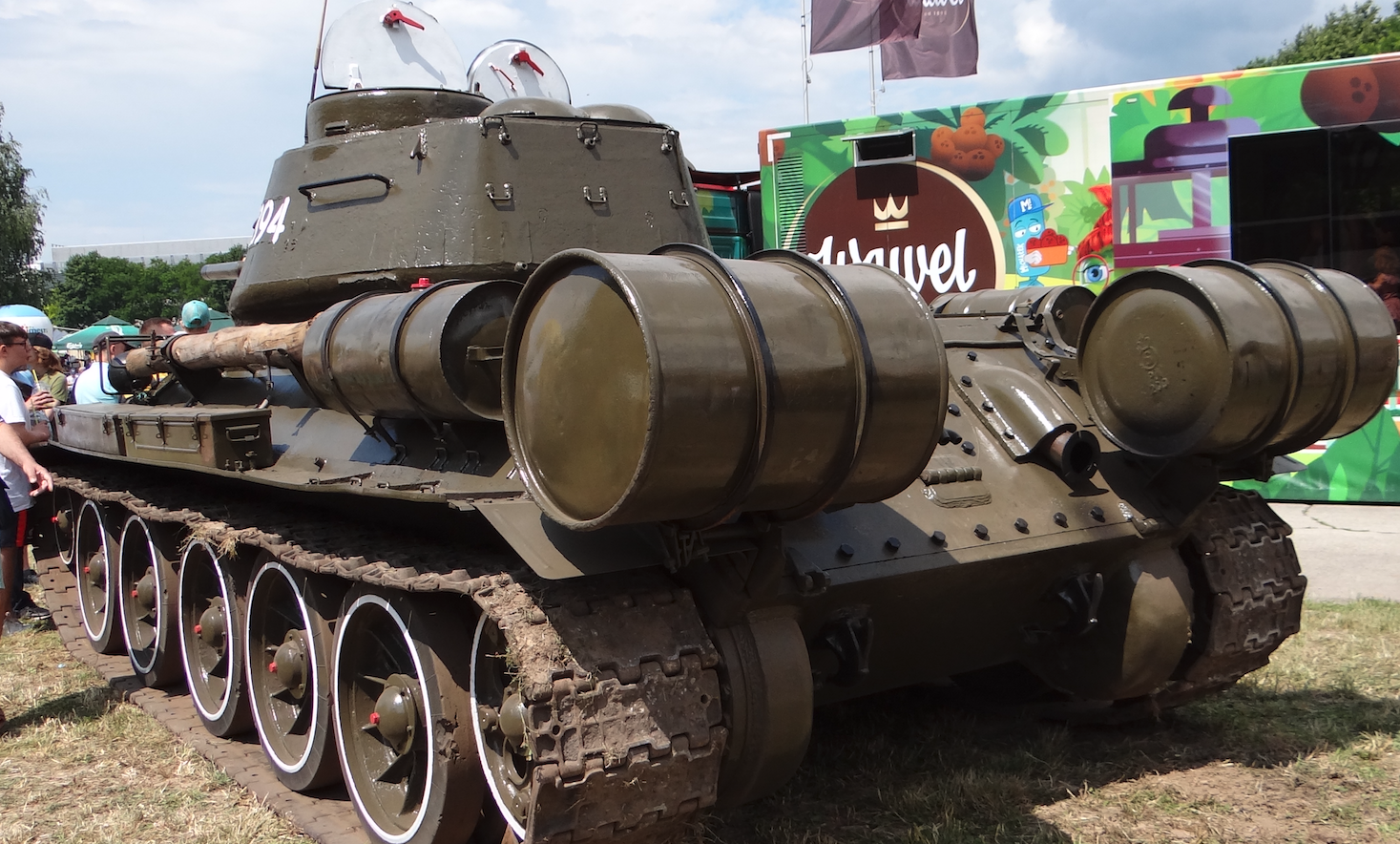Walcz 2025-05-31
Combat Open-Air Museum of the 1st Polish Army in Zdbice near Wałcz.

Fights for the Pomeranian Wall in 1945.
The fights for the Pomeranian Wall in 1945 were one of the important stages of the offensive of the Red Army (Soviet Army) and the Polish People’s Army, in the final phase of World War II. The Pomeranian Wall (Pommernstellung in Germanic) was a Germanic system of defensive fortifications that was built in the 1930s, in northwestern Poland (in the then East Prussia and Western Pomerania). The fortification system included: bunkers, combat bunkers, anti-tank barriers, anti-tank ditches, natural obstacles (lakes, forests and swamps). The Pomeranian Wall was aimed at Poland, because the Germanic narrative said that Poland would attack the Germans. In reality, the Pomeranian Wall was used in the fratricidal war between the Germans and the Muscovites. The battles for the Pomeranian Wall lasted from February to March 1945. It should be remembered that the Germans believed that as a result of the peace talks, the borders in Europe would remain as they were in 1938.
Chronology of events: On February 1, 1945, the Soviet and Polish troops began their attack on the Pomeranian Wall. In the period from February 10 to 14, 1945, heavy fighting took place for towns such as Nadarzyce, Jastrowie, Podgaje. On February 18, 1945, the Soviet army entered the town of Jastrowie. On February 27, 1945, the main defensive lines of the Pomeranian Wall were broken through by the 1st Polish Army. On March 5, 1945, Mirosławiec was occupied and the main operations in the Pomeranian Wall area were completed. The commander of the 1st Polish Army was General Stanisław Popławski. The Soviet side was the 2nd Belorussian Front, with commander Marshal Konstanty Rokossovsky. On the German side were remnants of various combat units of the Wehrmacht and SS.
The fighting was very fierce, and the terrain favored the defenders (forests, lakes, heavy snow and heavy frost). The attacks were led by Polish infantry units, cannons, tanks and supported by a small air force. There were large losses. One of the most tragic episodes of the fighting was the crime in Podgaje (January 31 – February 2, 1945), where Germanic Waffen-SS units murdered about 32-36 soldiers of the Polish Army, some of whom were burned alive. Today it is a place of national remembrance. In many towns (Podgaje, Jastrowie, Wałcz) there are monuments and cemeteries.
The breakthrough of the Pomeranian Wall enabled further offensive in Pomerania. On March 18, 1945, Kołobrzeg was occupied. As a result, the road to Berlin was now open from three directions.
The Open-Air Museum of the 1st Polish Army in Zdbice near Wałcz.
Geographic coordinates: 53.384N 16.487E. Elevation 113 m. The open-air museum is located on a local road, by Lake Zdbiczno, north of the village of Zdbice. The open-air museum is located about 15 km north of Wałcz. This is the area of the West Pomeranian Voivodeship, and the border of the Wielkopolska Voivodeship is nearby. In the village of Zdbice there is a church dedicated to the Exaltation of the Holy Cross. The area also includes kayak trails on the Piława River, which makes this place attractive for lovers of active recreation.
The Combat Open-Air Museum of the 1st Polish Army in Zdbice near Wałcz is a unique place of remembrance dedicated to the battles for the capture of the Pomeranian Wall during World War II. The open-air museum was established in 1986. The open-air museum includes an outdoor exhibition of combat equipment and fragments of the Pomeranian Wall fortifications. The open-air museum is a big word and currently (2025) includes four exhibits: a T-34-85 tank, two M-30 type howitzers, a 1939 type 52-K anti-aircraft gun, caliber 85 mm. Additionally, next to the exhibits there is a boulder and a plaque with the inscription “To the Heroes of the Battle for Breaking the Pomeranian Wall. Residents of the Wałcz Commune. May 26, 2018.” Candles are often lit by the commemorative boulder.
The open-air museum is not fenced and is open to visitors all year round. We can add that the plans for the development of the open-air museum included the construction of a number of points that were to illustrate the subsequent stages of the fighting. For financial reasons, the plans were very limited. For a dozen or so years, the National Remembrance Room has been operating in the village of Zdbice, where other memorabilia related to the fighting and the Polish Army were presented. Currently (2025), the room does not exist.
Written by Karol Placha Hetman

